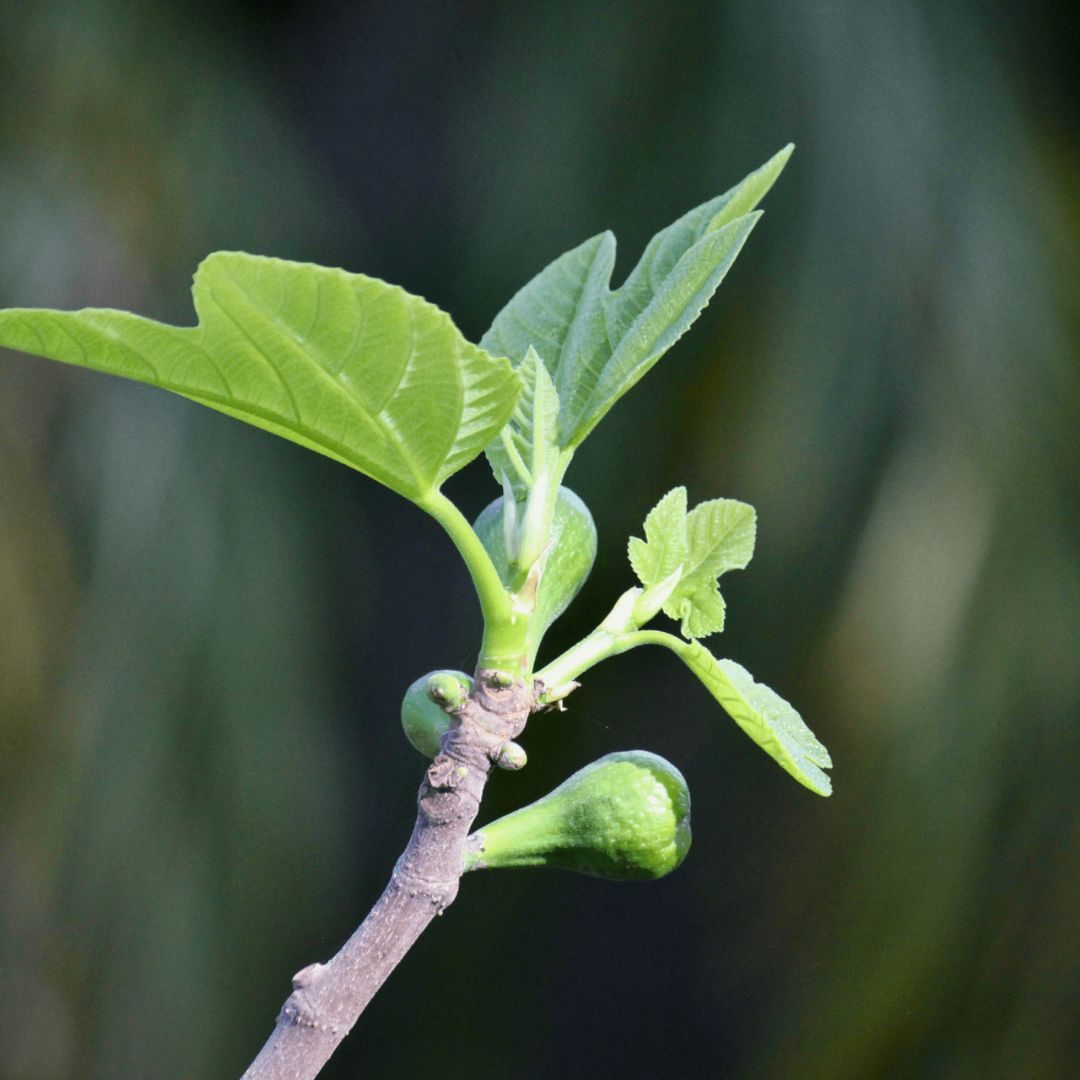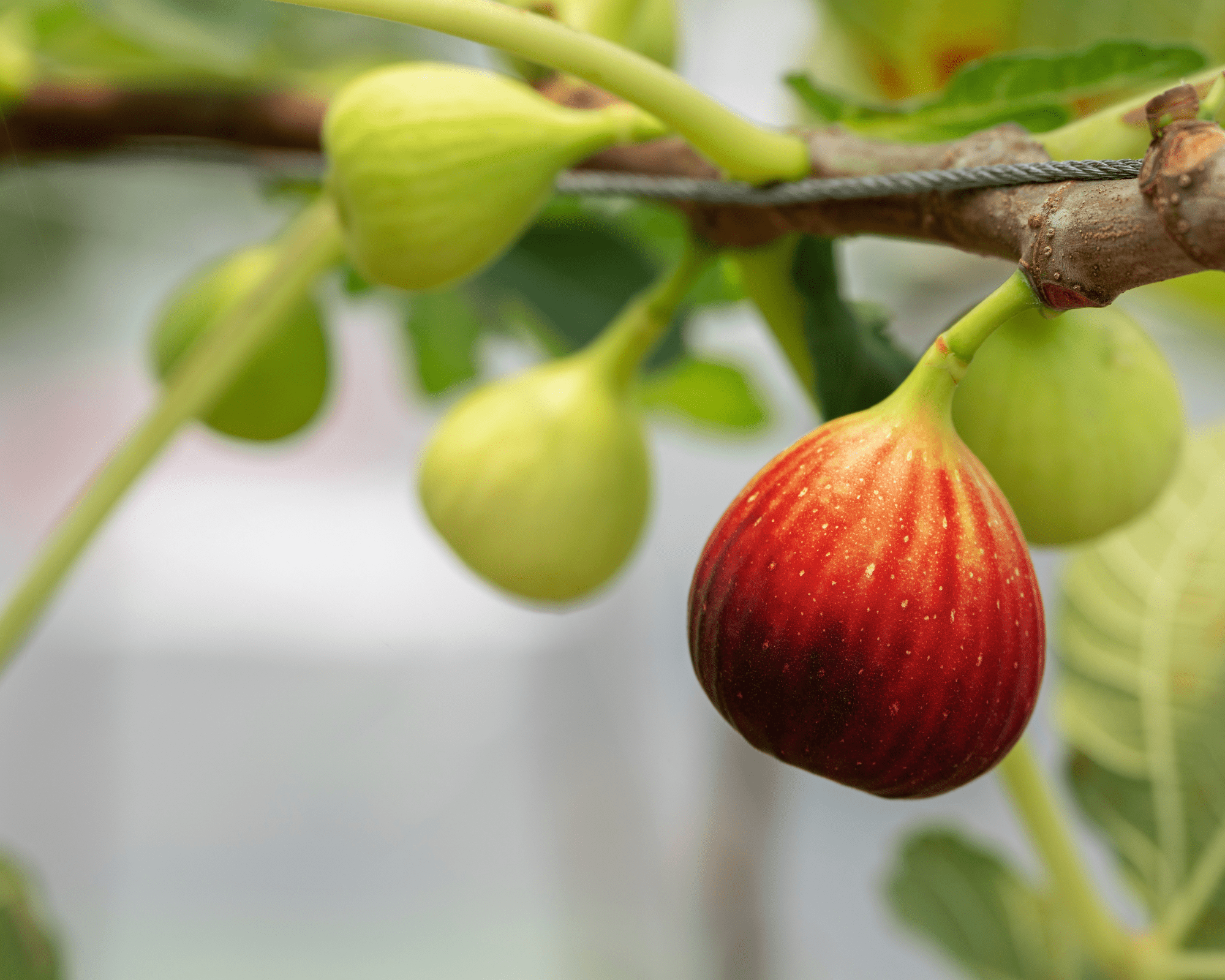Please read the full disclosure for more info. 💚
Figs are an ancient and beloved fruit, known for their sweet, juicy flavor and impressive health benefits. Not only are figs delicious, but growing fig trees in your garden can be a rewarding and fruitful endeavor. Whether you’re an experienced gardener or a newbie, fig trees can thrive in your backyard with the right care.
In this comprehensive guide, I’ll walk you through everything you need to know about growing fig trees in your garden—from selecting the right variety to harvesting your first batch of ripe, sweet figs. Let’s dive in!
1. Choosing the Right Fig Tree for Your Garden
The first step to growing figs in your garden is selecting the right variety. Different fig varieties thrive in different climates, so it’s important to choose one that is well-suited to your region. Here are some popular fig varieties to consider:
- Common Fig (Ficus carica): The most common variety grown around the world. It’s adaptable and produces sweet, soft fruit.
- Celeste Fig: A small, light-colored fig known for its rich flavor, perfect for warm climates.
- Black Mission Fig: A dark purple variety that’s ideal for both indoor and outdoor growth, great for fresh eating or drying.
- Kadota Fig: Known for its greenish-yellow color, Kadota figs are excellent for canning and preserving.
Tip: Check your USDA hardiness zone before selecting a fig tree variety to ensure it will thrive in your climate.
2. The Best Location for Planting Figs in Your Garden
Figs love the sun. To grow a healthy fig tree, you’ll need to find the perfect location in your garden. Fig trees prefer areas that get full sun for at least 8 hours a day, as they need plenty of sunlight to produce sweet fruit.
Things to consider when selecting a location:
- Sunlight: Choose a sunny spot that receives at least 8 hours of direct sunlight daily.
- Soil: Figs prefer well-draining soil. If your soil is heavy or clayey, amend it with organic compost to improve drainage.
- Space: Fig trees need space to grow. Make sure to plant them at least 10-15 feet apart to allow them room to spread their branches and roots.
Pro Tip: If you’re planting more than one fig tree, consider their growth habits and spread to avoid overcrowding. Proper spacing will also prevent fungal diseases.
3. Preparing the Soil and Planting Your Fig Tree
Before you plant your fig tree, make sure the soil is prepared for optimal growth. Here’s how to set up the perfect planting environment:
- Prepare the Soil: Dig a hole that’s about 2-3 times the size of the tree’s root ball. Mix the soil with organic compost or well-rotted manure to enrich the planting site.
- Planting Depth: Ensure the tree is planted at the same depth as it was in the nursery pot, with the root crown level with the surrounding soil.
- Backfill the Hole: Gently backfill the hole with the prepared soil mixture, making sure to firm it around the base to eliminate air pockets.
- Watering: After planting, water the tree deeply to help settle the soil and encourage root growth.
Tip: If you’re planting multiple trees, make sure to provide enough space between them to avoid competition for nutrients and sunlight.
4. Watering and Fertilization Tips for a Thriving Fig Tree
Watering and fertilization are essential for your fig tree’s health and growth. While fig trees are drought-tolerant once established, young trees need consistent watering to establish a strong root system.
Watering Tips:
- Young Trees: Water regularly (about once a week) to keep the soil moist but not soggy.
- Mature Trees: Once the tree is established, you can water less frequently but deeply, especially during dry spells.
- Mulching: Add a layer of organic mulch (like wood chips or straw) around the base of the tree to retain moisture and regulate soil temperature.
Fertilization: Fig trees are relatively low-maintenance when it comes to fertilization, but they will benefit from occasional feedings to ensure they get the nutrients they need for strong growth and fruit production.
- Organic Fertilizers: Use a balanced, slow-release organic fertilizer in early spring when new growth begins.
- Compost: Enrich the soil annually with compost to add organic matter and improve soil health.
Pro Tip: Avoid over-fertilizing with nitrogen, as it can promote excessive leaf growth at the expense of fruit production.
5. Pruning for Healthy Growth and Maximum Harvest
Pruning is an essential part of fig tree care. Proper pruning helps maintain the shape of the tree, encourages healthy growth, and maximizes fruit production. Here’s how to prune your fig tree for optimal results:
- When to Prune: The best time to prune fig trees is during the dormant season, usually in late winter or early spring, before the tree starts to bud.
- What to Prune: Remove any dead, damaged, or diseased wood. Trim any excessive growth that might crowd the tree’s center or affect airflow. This will help the tree focus its energy on producing fruit.
- Shaping: For an open, vase-like shape, remove branches that cross or grow inward. This improves light penetration and airflow, both of which are essential for healthy fruit development.
Tip: Don’t prune too much at once. Gradually shape the tree over a few years to avoid stress and excessive sap loss.
6. Managing Pests and Diseases in Your Fig Tree Garden
Fig trees are relatively pest-resistant, but they can still be affected by a few common garden pests and diseases. Regular inspection of your tree will help you catch problems early.
Common Pests:
- Aphids: These tiny insects can cause leaves to curl and yellow. Treat them with an organic insecticidal soap.
- Spider Mites: Look for fine webbing on leaves. Use a strong water spray or natural insecticides to control them.
Common Diseases:
- Fig Rust: This fungal disease causes yellow spots on the leaves. To manage it, remove infected leaves and apply a fungicide.
- Root Rot: Poor drainage can lead to root rot. Ensure your fig tree is planted in well-draining soil to prevent this issue.
Pro Tip: Keep your tree well-pruned to improve air circulation, which will help reduce the likelihood of fungal infections.
7. Harvesting Figs: When and How to Pick Them
Figs are ready to harvest when they are fully ripe and soft to the touch. They won’t ripen off the tree, so it’s important to pick them when they are at their peak.
Signs Your Figs Are Ready to Harvest:
- The fruit will be soft and slightly drooping from the stem.
- The color will deepen depending on the variety (e.g., purple figs will turn a rich purple).
- A sweet fragrance will be noticeable.
How to Harvest: Gently twist the fig off the stem or use pruning shears to cut it, leaving a small piece of stem attached. Be careful not to damage the fruit or the tree.
Pro Tip: Figs are delicate and will spoil quickly, so it’s best to eat or preserve them right after harvesting.
8. Winter Care and Protecting Your Fig Tree
Figs are not particularly cold-hardy and may need some protection during the winter months, especially in colder climates. Here’s how to care for your fig tree in the winter:
- Mulching: Add a thick layer of mulch around the base of the tree to protect the roots from freezing temperatures.
- Burlap or Tree Wrap: For smaller trees, you can wrap them with burlap or tree wraps to shield them from frost. If your tree is in a container, bring it indoors or move it to a sheltered spot.
- Pruning: Avoid heavy pruning in the winter, as it may leave the tree vulnerable to cold damage.
Tip: If you live in a colder zone, consider growing figs in pots so you can bring them indoors during the winter months
Conclusion: Enjoy Your Fresh, Homegrown Figs!
Growing fig trees in your garden can be incredibly rewarding. With the right care and attention, you’ll be able to enjoy fresh, homegrown figs for years to come. Whether you’re a seasoned gardener or a beginner, fig trees are a great addition to any garden, offering both beauty and delicious fruit.
Happy gardening, and may your fig trees thrive and produce an abundance of sweet fruit!


